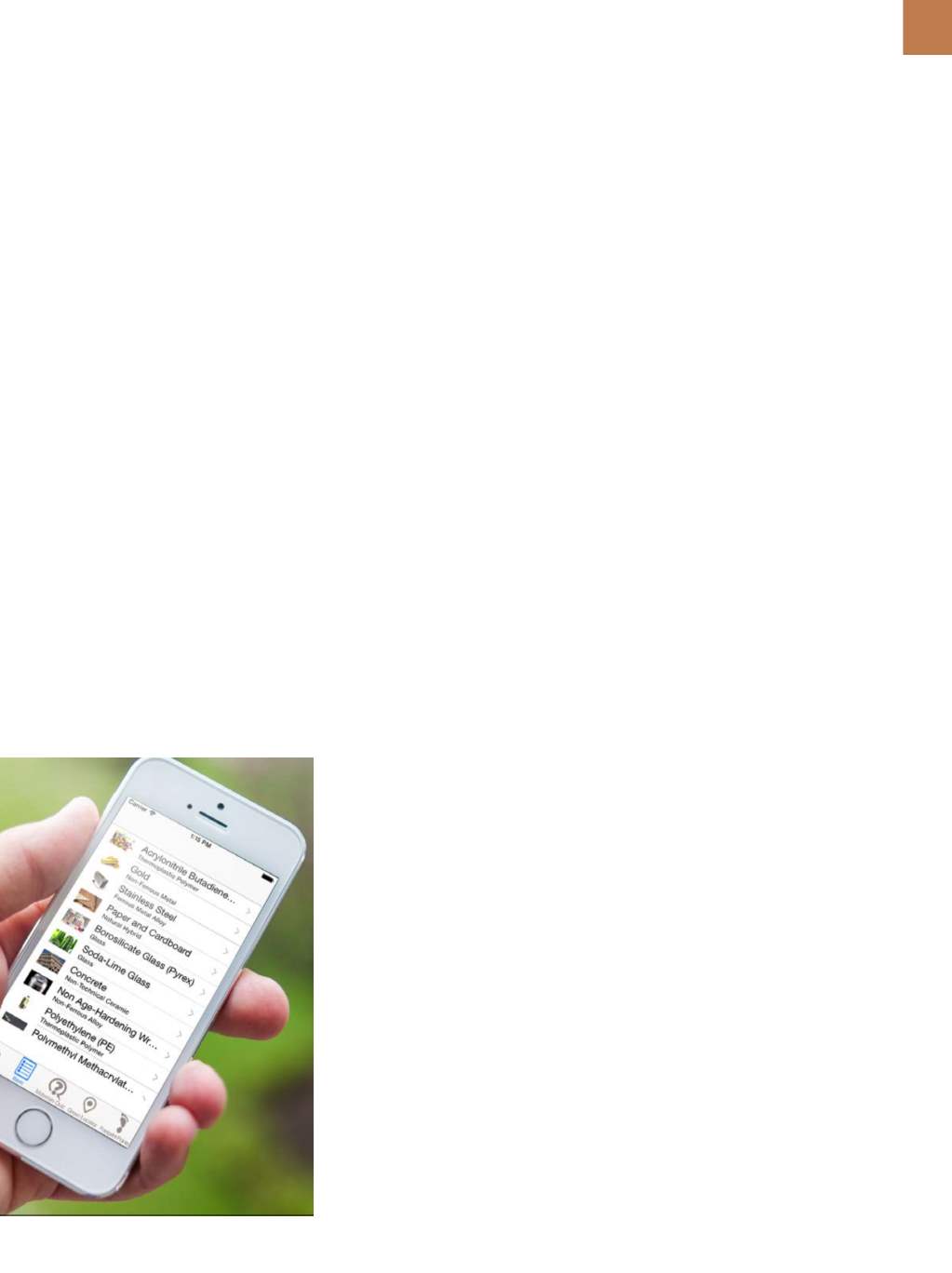

2 9
MATERIALS SUSTAINABILITY
APP SERVES AS TEACHING TOOL
A new mobile application could successfully incorporate
sustainability education into every school in the U.S.
EDUCATIONSPOTLIGHT
T
oday’s students use digital tools
in all aspects of their lives—for
communicating, socializing, en-
tertaining, organizing, and learning.
Even computers are fading in popular-
ity among the younger crowd in favor of
cell phones, tablets, and other devices.
Due to this communications revolution,
researchers are now aiming to harness
flexible mobile technology for materials
education purposes.
In the classroom, use of mobile ap-
plications or
apps
by middle and high
school students could trigger interest
in materials science and engineering.
As one recent example, a new app was
designed as an interactive
sustainabili-
ty game
where students learn without
realizing it. The idea behind the app
development is that learning about sus-
tainable materials and environmental
awareness could be enhanced if such
information was readily available on
cell phones and other mobile devices.
Because environmental concerns
are such an important topic, the EPA
began making recommendations in
1994 about how institutions can teach
sustainability in schools
[1]
. Today, the
Center for Green Schools and the U.S.
Green Building Council has its own
recommendations on how sustainabil-
ity can be taught, in hopes that every
school in the U.S. will require each stu-
dent to graduate with an understanding
of this topic in the near future
[2]
.
Sustainability education needs to
influence students in order to modify
their attitudes, behaviors, and thoughts
on being environmentally friendly. The
earlier students are exposed to sustain-
ability education, the easier it will be to
instill environmentally friendly habits
and opinions
[3]
.
However, there has been debate
as to whether technology use in the
classroom enhances education or if it
is a distraction
[4]
. Recent studies show
positive results regarding technology
use in the classroom to achieve ed-
ucational goals. For example, in one
study
[5]
, a control group was given
permission to use the technology un-
der teacher guidance to assist learn-
ing while another group learned the
same material without technology.
Students were given the same test af-
ter the lesson and students who used
technology achieved an overall score
16% higher than the control group
who did not.
Researchers then developed a
new sustainability app, which aims
to incorporate sustainability educa-
tion into U.S. classrooms in a fun way.
It consists of five major functions and
screens, which can be accessed at any
time from any screen with a navigation
bar at the bottom. The screens include:
•
Welcome/Home screen.
•
Materials Quiz, which includes 35
questions.
•
Materials List/Material Details
screen, which provides more details
about material cost per unit, com-
mon uses, date of first use, and CO
2
emissions. All information used to
compile this list is referenced from
CES EduPack, Granta Design, UK
(Figs. 1 and 2).
•
Footprint Points Counter, which
shows how many points a user has
earned, depending on environmen-
tal friendliness.
•
Green Locator Map—
app map
illus-
trates 10 locations in the Pittsburgh
area that are known as “green”
buildings and what makes them so
notable (Fig. 3).
The app was developed on an
Apple computer with XCode software
(Objective-C programming). Alpha
testing using the simulation compo-
nent of the software ensured all func-
tions were working properly. Each
question was reviewed to make sure
answers were appropriately marked
and also to ensure every question
could be viewed.
This application is still in the de-
velopment stage and more work is
needed before it can be used in schools.
When it is further refined, the app will
be available in the Apple store for beta
testing. After it is downloaded, students
who are part of the testing phase will
evaluate it and feedback will be used to
further enhance the application. When
Fig. 1 —
Sustainable materials list screen.
A D V A N C E D
M A T E R I A L S
&
P R O C E S S E S |
N O V E M B E R / D E C E M B E R
2 0 1 5


















